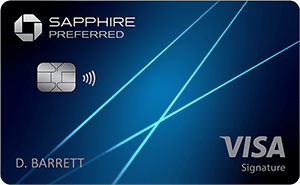Overview
If the stock market feels like a game you weren’t invited to play, you’re not alone. Between the jargon, the volatility, and the endless parade of “hot stock tips,” investing can seem overwhelming.
But here’s the good news: you don’t need to be a Wall Street wizard to build wealth. Index funds and exchange-traded funds (ETFs) are like the easy mode for investing, offering a simple, proven path to growing your money without needing a finance degree or a crystal ball.
What Are Index Funds and ETFs?
An index fund is a type of investment that tracks the performance of a specific market index, like the S&P 500 or the total US stock market. Instead of a fund manager trying to pick winning stocks, an index fund simply mirrors whatever is in that index. If the S&P 500 goes up nine percent, your S&P 500 index fund goes up about nine percent too.
An index fund can be a mutual fund or an ETF, but there are some key differences between the two. The main one is that ETFs trade on stock exchanges throughout the day, just like individual stocks. In contrast, mutual funds are traded just once a day at the end of the market trading session.
Both index mutual funds and ETFs offer instant diversification. With a single purchase, you’re investing in hundreds or even thousands of companies across multiple sectors.
Index funds vs. ETFs: What's the difference?
While index mutual funds and index ETFs share a lot of DNA, a few key differences set them apart:
Trading flexibility: ETFs trade throughout the day at market prices, giving you real-time control. Index funds, on the other hand, can only be bought or sold once daily after the market closes at their net asset value.
Minimum investments: You can buy a fractional share of an ETF for as little as $1, depending on the fund and brokerage firm. Many index funds require minimums of $1,000 to $3,000, though some providers have lowered or eliminated these barriers.
Fee structures: Both index funds and ETFs are known for low costs, but ETFs tend to be more expensive on average. Even so, you may be able to find ETFs with near-zero or even no expense ratios (the annual fee charged to manage the fund).
Tax efficiency: Because of how they’re structured, ETFs rarely trigger capital gains taxes until you sell your shares. Index funds can pass along capital gains to all shareholders, even if you haven’t sold anything.
The Benefits of Investing in Index Funds and ETFs
There are a few reasons why index funds and ETFs have become the go-to choice for millions of investors:
Affordability: The most cost-effective funds charge expense ratios under 0.10 percent—that’s less than $10 annually for every $10,000 invested. Compare that to actively managed funds that can charge one percent or more.
Built-in diversification: Instead of putting all your eggs in one basket, you’re spreading your money across hundreds of companies. This helps cushion the blow when individual stocks stumble.
Minimal maintenance: These funds are passively managed, meaning you’re not paying a team of analysts to pick stocks. History shows this is actually an advantage—In 2024, only 13.2 percent of actively managed funds beat the S&P 500, according to Morningstar, with an average gain of a little more than half the index’s return.
How to Start Investing in Index Funds and ETFs
Now that you understand what index funds and ETFs are and why they work, it’s time for the fun part: actually investing your money. Here are some steps you can follow.
1. Set your financial goals
Are you saving for retirement in 30 years or a down payment in five? Your timeline and objectives will shape which funds make sense for you. Long-term goals can handle more stock-heavy portfolios, while shorter timelines might call for a mix that includes bonds.
2. Choose where to invest
Competition among brokers has made investing more accessible than ever. Here are some tips to help you compare your options:
Look for platforms that offer commission-free trading on ETFs and mutual funds (most major brokers have eliminated these fees).
Check account minimums to open an account and avoid brokers with minimums beyond your reach.
Consider the range of funds available, the quality of their mobile app and website, and whether they provide educational resources for beginners.
If you’re investing for retirement, make sure the broker offers IRA and Roth IRA accounts, which provide valuable tax advantages.
Take time to compare a few platforms before committing to one. The right choice ultimately depends on your specific needs and investing style.
3. Pick your funds
For beginners, broad market exposure is your friend. S&P 500 index funds are the most popular starting point because they track the 500 largest companies in the US and provide instant diversification across major sectors.
Total stock market funds cast an even wider net, covering everything from large established corporations to smaller growth companies. When comparing similar funds, pay close attention to expense ratios.
If you want to add stability to your portfolio, consider bond index funds, which track government or corporate bonds and typically offer lower returns but less volatility than stocks. Some investors prefer the simplicity of balanced or target-date funds, which automatically mix stocks and bonds in proportions that match your timeline and risk tolerance. When comparing similar funds, pay close attention to expense ratios.
4. Decide how much to invest
Start with whatever you can afford and, if possible, set up automatic monthly contributions. This strategy, called dollar-cost averaging, means you buy shares at different price points over time, smoothing out market volatility.
The right amount to invest is whatever you can consistently afford after covering your essential expenses, building an emergency fund, and paying down high-interest debts.
5. Place your order
For ETFs, you can use a market order (buy at the current price) or a limit order (set your maximum price). For index mutual funds, your purchase will be processed at the end of the trading day. Many brokers let you set up automatic investments that run on autopilot.
Common Mistakes to Avoid
Index funds and ETFs are beginner-friendly, but that doesn’t mean they’re mistake-proof. Even seasoned investors fall into traps that can quietly erode returns over time. Being aware of these common missteps can save you thousands of dollars and a lot of stress down the road. Here’s what to watch out for:
Chasing performance. Don’t buy whatever fund is hot right now just because it had a great year. Past performance doesn’t guarantee future returns, so you’ll want to look at more features of each fund to determine the best fit.
Panic selling during downturns. Market drops are uncomfortable, but losses only become real when you sell. Markets have always recovered given enough time, and selling during a crash locks in your losses permanently.
Paying too much in fees. Even a small difference in expense ratios can compound into serious money over decades. Always compare costs between similar funds and choose the lower-fee option.
Trying to time the market. You’re far more likely to miss the best days than avoid the worst ones. Time in the market beats timing the market, every time.
Not understanding what you own. Two funds with similar names might have very different holdings or strategies. Read the fund description and know what you’re actually investing in.
Over-trading ETFs. Just because you can buy and sell ETFs throughout the day doesn’t mean you should. Treat them as long-term investments, not day-trading vehicles.
Creating portfolio overlap. Owning multiple S&P 500 funds doesn’t increase diversification; you’re just buying the same companies multiple times. Make sure your funds complement rather than duplicate each other.
The Point
Investing in index funds and ETFs isn’t complicated, and you don’t need perfect timing or inside information to succeed. Millions of everyday people have built substantial wealth using these exact tools, not through genius stock picking, but through consistent investing and patience.
Start simple. Pick one or two broad market funds and invest regularly. Let time and compound growth do the heavy lifting. Your future self will thank you for taking that first step now.









 by your friends at The Daily Navigator
by your friends at The Daily Navigator



